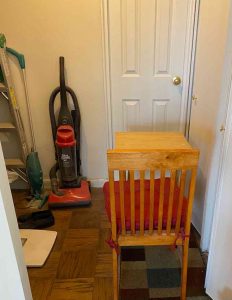Related pages:
I passed with a score of 75%. (70% is passing.) I didn’t review all my answers because I was starting to feel dizzy. I might have gotten one or two questions right had I finished review. But passing is passing, so I’ll call it a win.
Also see my experience taking the exam online.
My overall exam impressions
Putting aside the discomfort with taking the exam from home, I think it is a good exam. There’s a lot of testing of concepts/understanding and not a lot of memorization. For example, there was no need to memorize the command line options for each command; something I wasted time on. There were a number of questions about the best way to do something in a scenario. Most of the questions were pick one of four. A few were pick 2 or 3. Some were true/false. And two were typing in the answer. Both were things that one could reasonably be expected to know.
Studying for this exam definitely got me to understand Terraform and I have confidence next time I write/edit/review scripts, I’ll know what I’m doing. Another nice thing about cert exams is questions that I’m unsure of (and I can remember) I look up the answer to and remember for a long time. I still remember something I got wrong on the Jenkins exam and I took that 6 years ago! I do know what I got wrong on 2.0 and 7.0 so that was effective.
Status: Pass
Overall Score: 75%
Breakdown by content area:
1.0 Understand infrastructure as code (IaC) concepts: 100%
My score report
2.0 Understand Terraform’s purpose (vs other IaC): 50%
3.0 Understand Terraform basics: 71%
4.0 Use the Terraform CLI (outside of core workflow): 66%
5.0 Interact with Terraform modules: 83%
6.0 Navigate Terraform workflow: 83%
7.0 Implement and maintain state: 50%
8.0 Read, generate, and modify configuration: 81%
9.0 Understand Terraform Cloud and Enterprise capabilities: 100%
My experience with Terraform before starting studying
I reviewed a Terraform script for one of our systems and “paired” with a teammate on parts of another one. Both of them happened during the “mandatory full time work from home” for over a year experience. My brain wasn’t in great shape for a lot of that period so it didn’t click. My goal of taking this cert was to understand the principles and re-learn everything.
Offline studying
My ideal was to do as much of the studying as I could offline on the subway on a plane. (I had two round trip flights in the last two months.) This meant books were ideal.I had read Terraform in Action earlier in the year so re-read the relevant parts.
IPSpecialist has two $10 books – the study guide and 150 extra practice questions. Both were listed as 2022 (which is important because the exam changed recently.) The books had a ton of errors and looked like they were written by committee. But they were cheap and let me study a lot offline so I’ll call them worth it. (I also hadn’t realized IPSpecialist and Whizlabs were the same company.)
Online studying
I did the 6 official practice questions. (got 5/6 day of the exam, but that was the second time I’d seen the questions). I also skimmed the official review docs the day of the exam.
Running Terraform
Other than watching my teammate run Terraform, I have no hands on experience. (That will change soon.) I took the exam without ever directly running Terraform.

